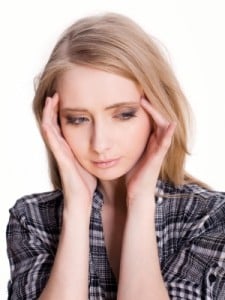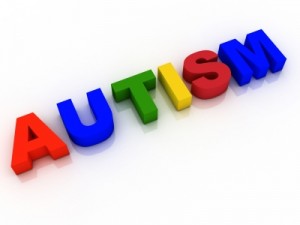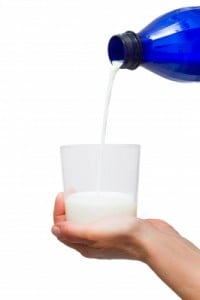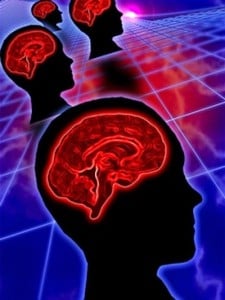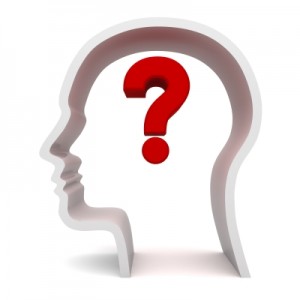 Depression is one of the most common mental illnesses in the United States today, affecting more than 15 million people. On average, people start experiencing depression at 32 years old, however 3.3% of teenagers between 13-18 have depressive disorders as well. Depression is greatly influenced by biological, genetic, environmental, nutritional, and/or psychological factors. Impaired functioning between neurotransmitters in different regions of the brain that are responsible for regulating mood may result in onset of depression. Neurofeedback is a great supplemental method to help retrain the brain to function most efficiently. Neurofeedback specialists pinpoint exactly where the brain is having trouble functioning, and teaches the brain to self-correct, reducing or eliminating the symptoms of depression over time.
Depression is one of the most common mental illnesses in the United States today, affecting more than 15 million people. On average, people start experiencing depression at 32 years old, however 3.3% of teenagers between 13-18 have depressive disorders as well. Depression is greatly influenced by biological, genetic, environmental, nutritional, and/or psychological factors. Impaired functioning between neurotransmitters in different regions of the brain that are responsible for regulating mood may result in onset of depression. Neurofeedback is a great supplemental method to help retrain the brain to function most efficiently. Neurofeedback specialists pinpoint exactly where the brain is having trouble functioning, and teaches the brain to self-correct, reducing or eliminating the symptoms of depression over time.
There are several different types of depression, all of which neurofeedback can assist in correcting. Symptoms of depression are highly varied case to case, however certain symptoms are known to be associated with certain types of depression. The causes of each type of depression and the methods of treating them are very different depending on what type of depression exists in any given case. Learn more about the various types of depression, their causes, and symptoms by reading this list of ten different types of depression.
1. Major Depression
AKA: Clinical depression, unipolar depression, major depressive disorder
Affects: 7% of American adults
May Be Brought on by: Alcohol/drug abuse, chronic medical conditions, traumatic/stressful life events (such as death, divorce, etc.), certain medications, sleep issues, unexplained aches or pains, decreased sex drive, thoughts of death and/or suicide
Symptoms: Poor mood, loss of interest in activities once enjoyed, fatigue, agitation, irritability, trouble concentrating, changes in appetite, weight loss or gain, changes in sleep habits, suicidal thoughts, feelings of hopelessness, guilt, self-hatred, anger, and/or helplessness
2. Adjustment Disorder
AKA: Exogenous, reactive, or situational depression
Affects: 12% of Americans(varies greatly)
May Be Brought On By: A traumatic and/or stressful experience
Symptoms: Sadness, poor mood, frequent crying, anxiety, stomach aches, head aches, heart palpitations, changes in appetite, weight gain or loss, fatigue, unusual recklessness, unusual destructive acts, alcohol or drug abuse, isolation.
3. Persistent Depressive Disorder
AKA: Dysthymia
Affects: 2% of Americans
May Be Brought On By: Family history, imbalances in the brain, trauma, gender (more common in women), brain injury, additional mental disorders such as anxiety or addiction
Symptoms: Depressed mood most days for at least 2 years, poor appetite or overeating, insomnia, hypersomnia, fatigue, low self-esteem, poor concentration, feeling hopelessness or worthlessness, difficulty making decisions.
4. Psychotic Depression
AKA: Depressive Psychosis
Affects: 3 out of every 100 Americans
May Be Brought On By: Genetics, stress, drug use, lack of sleep, can be caused by certain illnesses including brain diseases (such as Parkinson’s, Huntington’s, and some chromosomal disorders, brain tumors or cysts, dementia, HIV, syphilis, epilepsy, and stroke.
Symptoms: Delusions, hallucinations, difficulty concentrating, poor mood, changes in sleep habits, anxiety, suspiciousness, isolation, unusual or suicidal thoughts or actions, trouble functioning
5. Bipolar Disorder
AKA: Manic Depression
Affects: 3 million Americans
May Be Brought On By: Genetics, traumatic events may trigger predisposition, chemical imbalances in the brain
Symptoms: Dramatic cycling mood changes reaching extreme highs (mania) and extreme lows (depression), explosive behavior, irritability, changes in sleep,
Symptoms of Mania: High energy, excitement, joy, poor judgment, reckless behavior, racing thoughts, feelings of invincibility
Symptoms of Depression: Sadness, hopelessness, anger, suicidal thoughts (high suicide risk)
6. Melancholic Depression
AKA: Depression with melancholic features, a DSM-IV subtype of clinical depression, most common type of clinical depression
Affects: 2%-10% of all depression diagnoses
May Be Brought On By: genetics, chemical imbalances in the brain
Symptoms: Poor mood, feelings of meaninglessness, emptiness, numbness, failing to find a purpose in life, change in appetite, severe weight loss or gain, waking in the early morning, excessive guilt, fatigue, initiation difficulty, difficulty with regular or mundane tasks, cognitive slowness, physical slowness, poor concentration, physical agitation, inability to feel pleasure, hypersomnia
7. Atypical Depression
AKA: Depression with atypical features, subtype of clinical depression
Affects: Up to 36% of depression diagnoses
May Be Brought On By: Chemical imbalances in the brain, genetics, traumatic/stressful life event, drug/alcohol abuse, isolation
Symptoms: Poor mood, mood is usually and strongly reactive to environmental and situational circumstances, increased sensitivity to rejection, issues with social relationships, insomnia, hypersomnia, eating too much, weight gain, fatigue, weakness
8. Seasonal Affective Disorder
AKA: SAD, winter blues
Affects: 4%-6% of Americans
Brought on By: Lessened exposure to natural sunlight
Symptoms: Poor mood during the winter months that disappears in spring, anxiety, increased irritability, fatigue, weight gain.
9. Premenstrual Dysphoric Disorder
AKA: PMDD
Affects: 2%-10% of menstruating women
May Be Brought On By: Low levels of serotonin (neurotransmitters in the brain that control mood, attention, sleep, and pain)
Symptoms: Depression occurs during the second half of menstrual cycles, loss of interest in relationships and daily activities, trouble concentrating, fatigue, sadness, feelings of hopelessness, suicidal thoughts, anxiety, feeling a loss of control, mood swings, food craving, binge eating, panic attacks, irritability, anger, bloating, breast tenderness, headaches, joint and/or muscle pain, trouble sleeping
10. Postpartum Depression
AKA: Intense baby blues
Affects: 16% of new mothers
Brought On By: Hormonal and physical changes after giving birth, stress from new responsibility of having a child, develops within a year after giving birth
Symptoms: Extreme sadness, fatigue, feelings of hopelessness, loneliness, anxiety, fear of something happening to the baby, feeling disconnected from the new baby, suicidal thoughts
If you are experiencing symptoms of depression, neurofeedback is an excellent solution to improve mood and functioning so you can live a happier life. In addition to relieving the symptoms of depression, neurofeedback improves mood, sleep, and overall performance for school and/or work. Any coexisting brain-based issues such as ADHD are corrected simultaneously. Schedule a free consultation with our director Dr. Jolene Ross for more information.
Image courtesy of Master isolated images at FreeDigitalPhotos.net


